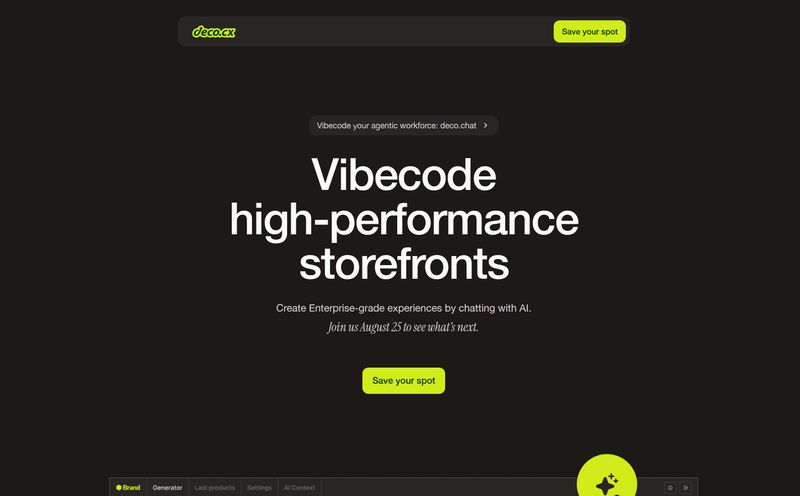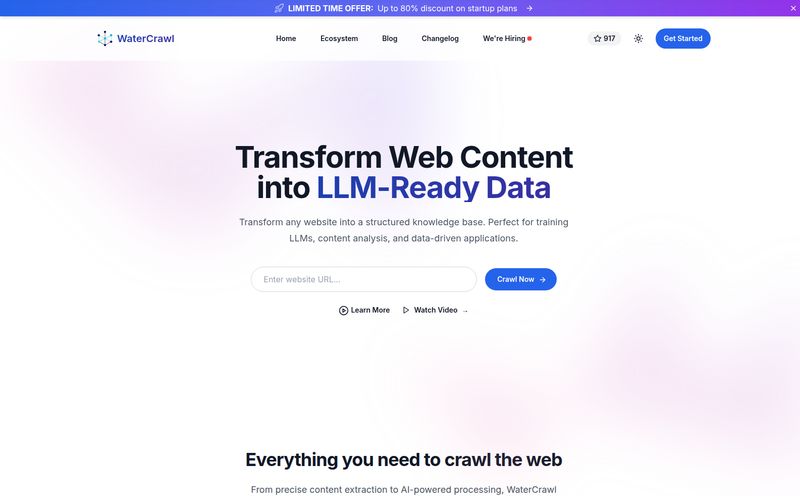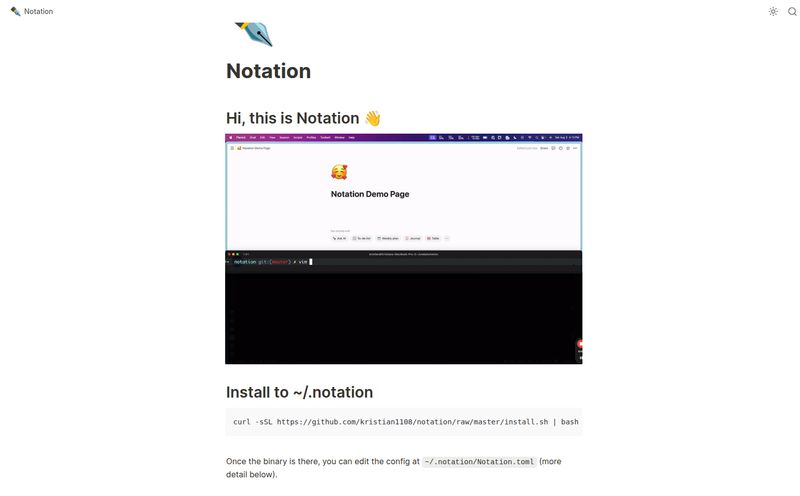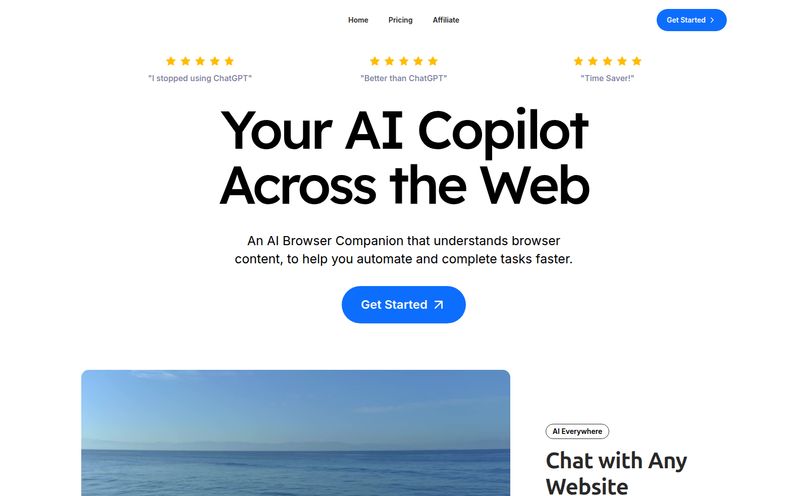Getting a machine learning model into production is one thing. Keeping it there, healthy and effective, is a whole other beast. I’ve been in the SEO and traffic game for years, and I've seen the shift. We've gone from optimizing keywords to optimizing algorithms. And I've seen more AI models drift into oblivion than I've had hot dinners.
You know the feeling. The model worked perfectly in the Jupyter notebook. It passed all the tests. Then you deploy it, and a few weeks later, performance starts to… sag. Why? Did the data change? Is there a new customer segment it’s failing on? Is it suddenly showing a weird bias? Answering these questions can feel like herding cats. In the dark. This is the messy, unglamorous reality of MLOps, and it's where most teams stumble.
So when I come across a platform that claims to unify the whole chaotic process, my ears perk up. I've been kicking the tires on Openlayer for a while now, and I’m ready to share my thoughts. This isn’t just another dashboard with pretty graphs; it feels like a tool built by people who have actually been in the trenches.
So, What is Openlayer, Really?
On paper, Openlayer is an “AI testing and observability platform.” But what that actually means is it’s a single source of truth for your model’s entire lifecycle. Think of it as a central nervous system for your AI projects. It connects the lab (where you build and test) to the real world (where your model makes decisions) and provides a constant feedback loop between them.
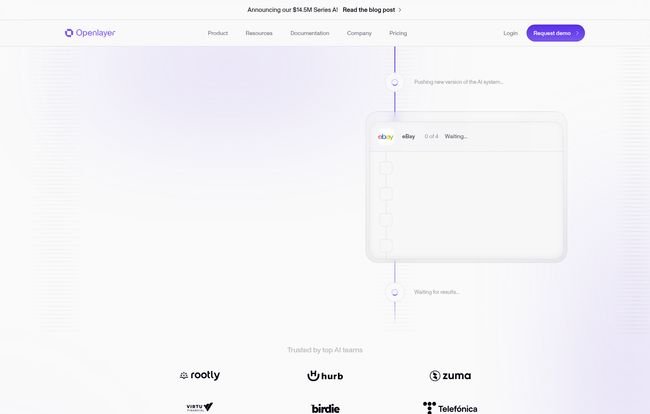
Visit Openlayer
It’s designed to help you with three big headaches: evaluation, observability, and governance. Instead of juggling a separate tool for testing, another for monitoring production performance, and a bunch of spreadsheets for compliance checks, Openlayer brings it all under one roof. It works with traditional ML models and the newer, shinier LLMs that everyone’s talking about. This unified approach is, for me, its biggest selling point. It’s about tearing down the silos between the data scientists who build the models and the engineers who have to keep them running.
Why Your Current AI Workflow Is Probably Broken
If your workflow involves a lot of manual checks, Slack messages with screenshots of error logs, and a vague sense of dread every time you push a new model version, you're not alone. It's the default state for many. Here’s how Openlayer tries to fix that.
Catching Problems Before They Burn You
The core of a good MLOps practice is robust testing. And I don’t just mean checking for a single accuracy score. Openlayer lets you build custom test suites that go way deeper. You can create tests to check for performance drops (regressions) on specific, critical slices of your data. For instance, is your loan approval model suddenly biased against a certain demographic? Is your product recommendation engine failing for users in a new geographic market? Openlayer helps you catch this before you deploy.
The Git integration is genius here. You can connect your projects and automatically run these evaluations with every pull request. It basically turns model quality into a CI/CD-like process, which is how it should be. No more “whoops, we didn't test for that” moments after the fact.
Observability That Gives You Answers, Not Just Data
Once a model is live, you need to watch it. But a dashboard showing that your model's accuracy dropped by 5% isn't that helpful on its own. The real question is why. This is where Openlayer’s observability shines. It helps you pinpoint the root cause of performance degradation. You can track data drift, prediction drift, and overall model health in real-time.
"It's like going from a simple 'check engine' light to having a full diagnostic scanner that tells you exactly which cylinder is misfiring and why."
The platform provides automated analysis and alerts, so you’re not staring at graphs all day. You get notified when something matters, and you can quickly dive in to see what’s up. It helps you identify the exact subpopulations of data where the model is struggling. That's actionable. That's how you fix things.
Collaboration and Governance Without the Bureaucracy
AI isn’t a solo sport. It takes a team. Openlayer is built for that. Everyone from the data scientist to the product manager to the compliance officer can have a view into the model’s performance and behavior. It creates a shared language and a shared understanding of what’s going on.
And then there's governance. A scary word, I know. It often means slow, painful processes. But here, it’s more about guardrails. For industries like finance or healthcare, being able to produce audit logs and prove that your models are fair and robust is non-negotiable. Openlayer helps automate a lot of that documentation and reporting, making compliance less of a manual nightmare.
Let's Talk Turkey: The Openlayer Pricing Structure
Alright, so how much does this all cost? Openlayer has a pretty straightforward two-tier approach, which I appreciate. No confusing add-ons or hidden fees from what I can see.
- Basic (Trial): This is your entry point. It’s generous enough for an individual or a very small team to get a real feel for the platform. You get one member, one test project, and one live project, but with unlimited evaluations. This is crucial—they’re not nickel-and-diming you on the core functionality. You get the AI test suites, the observability features, and even their AI assistant. Support is community-based via Discord. This is perfect for trying it out on a non-critical project to see if it fits your workflow.
- Enterprise (Custom): This is for serious business. If you have multiple teams, a portfolio of models in production, and strict security requirements, this is the plan for you. You get unlimited everything—members, projects, you name it. Plus, you get the big-boy features like team access controls, audit logs for governance, SSO/SAML for security, and dedicated support via Slack. The pricing is custom, which is standard for enterprise software. You'll have to contact their sales team to get a quote tailored to your scale.
My take? The Basic plan is a genuinely useful trial, not a crippled demo. Use it. If you find yourself constantly wishing you could add more team members or projects, that's your sign to start the conversation about the Enterprise plan. The value is definitely there for teams who feel the pain of production AI issues.
The Good, The Bad, and The Setup
No tool is perfect. While I'm pretty bullish on Openlayer, it’s important to have a balanced view. The biggest strength is its unified nature. Having testing, observability, and governance in one place just makes sense. The integrations are solid, and the focus on collaboration is a massive win for any real-world team.
On the flip side, it’s not a plug-and-play magic wand. There is an initial setup curve. You have to integrate their SDK and configure your projects. It’s not terribly difficult if you’re comfortable in that world, but it’s not zero-effort either. I'd argue teh time invested upfront pays for itself quickly by preventing just one major production fire, but it's a hurdle to be aware of. Also, for smaller teams or startups on a shoestring budget, the jump to the Enterprise plan might be a significant financial consideration. Some of the most critical governance and security features are, understandably, gated behind that plan.
Frequently Asked Questions About Openlayer
Is Openlayer just for large language models (LLMs) or traditional ML too?
It’s built for both. Whether you're working with a classic scikit-learn model for churn prediction or a fine-tuned LLM for customer support, Openlayer can handle the evaluation and monitoring. Its flexibility is a major plus.
How difficult is the integration process?
It involves using their Python SDK. If you're a data scientist or ML engineer, it will feel familiar. You'll need to add some code snippets to your training and inference pipelines to log data and models to the platform. They have pretty clear documentation to guide you through it.
Is the free 'Basic' plan enough to get started?
Absolutely. It’s designed for that exact purpose. It gives you access to the core evaluation and observability features for a single project. It's the best way to properly evaluate the platform and see if it solves your specific problems before committing financially.
Does Openlayer replace tools like MLflow or Weights & Biases?
Not necessarily. It can, but it also plays well with others. You might use a tool like MLflow for experiment tracking during the initial R&D phase, and then use Openlayer as the more robust, production-focused system for pre-deployment testing and post-deployment observability and governance. They occupy slightly different, though overlapping, spaces in the MLOps stack.
Is Openlayer Worth It? My Final Verdict
Look, the world of MLOps tools is crowded and noisy. But Openlayer cuts through a lot of that noise by focusing on the complete lifecycle and the collaborative nature of AI development. It addresses the actual, painful problems that teams face after the initial excitement of building a model wears off.
It's not a silver bullet, but it’s a powerful set of armor and a sharp diagnostic toolkit. If you’re a team that's getting serious about AI, moving beyond hobby projects, and feeling the operational strain of managing live models, then yes, Openlayer is absolutely worth a deep look. It might just be the thing that lets you tame your wild AI models and finally get a good night's sleep.
